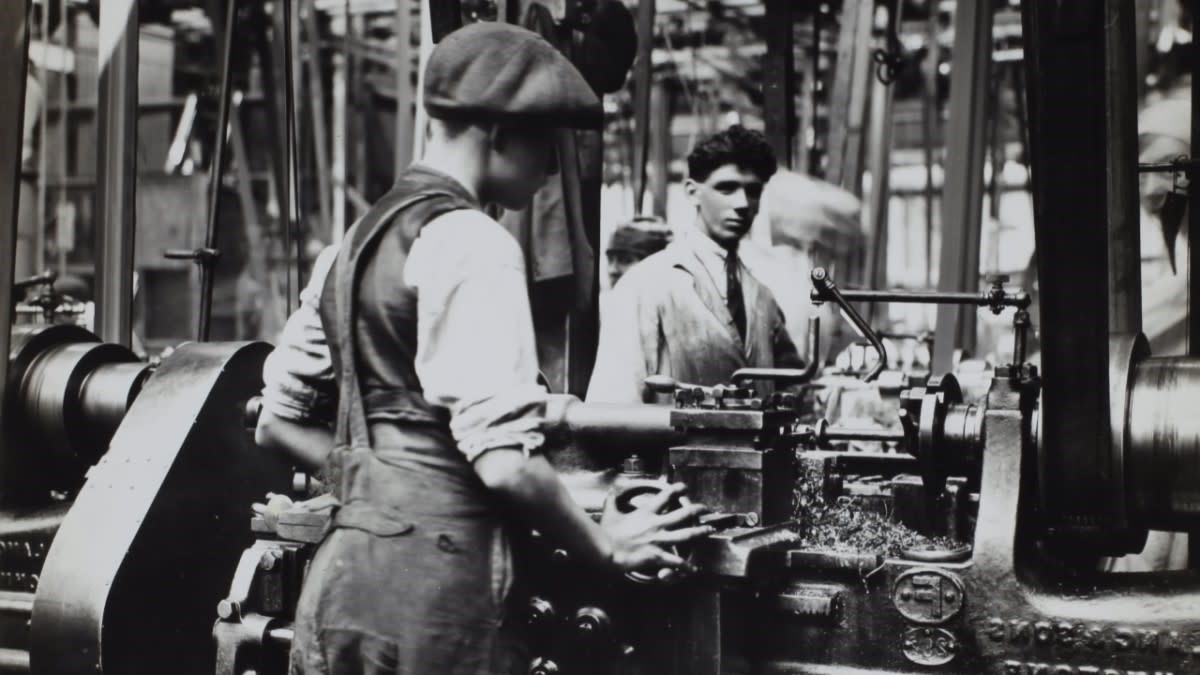
Did you know the Industrial Revolution completely transformed the world we live in? From steam engines to the rise of factories, this pivotal period marked a significant shift in human history, altering everything from how goods were produced to how people lived and worked. With advancements in technology and industry, societies moved from agrarian economies to industrial powerhouses. This change wasn't just about machines and manufacturing; it also had profound effects on social structures, urbanization, and even the environment. In this introduction, we'll uncover 20 fascinating facts about the Industrial Revolution, shedding light on how this era of innovation and change laid the groundwork for the modern world. Get ready to be amazed by the stories of ingenuity, challenges, and transformations that defined this remarkable period.
The Birth of the Industrial Revolution
The Industrial Revolution marked a significant turning point in history. It began in the late 18th century and transformed economies, societies, and daily life.
-
The Industrial Revolution started in Britain around 1760. It spread to other parts of the world over the next few decades.
-
James Watt's improvements to the steam engine in 1776 played a crucial role. His work made steam engines more efficient and practical for various industries.
-
The textile industry was one of the first to be transformed. Innovations like the spinning jenny and power loom revolutionized cloth production.
Technological Innovations
Technological advancements were at the heart of the Industrial Revolution. These innovations changed how goods were produced and transported.
-
The invention of the steam locomotive by George Stephenson in 1814 revolutionized transportation. Railways became a key mode of transport for goods and people.
-
The telegraph, invented by Samuel Morse in 1837, transformed communication. Messages could be sent quickly over long distances.
-
The development of the Bessemer process in the 1850s allowed for mass production of steel. This made steel more affordable and available for construction and manufacturing.
Social and Economic Impact
The Industrial Revolution had profound effects on society and the economy. It changed how people lived and worked.
-
Urbanization increased dramatically. People moved from rural areas to cities in search of work in factories.
-
Child labor became widespread. Many children worked long hours in harsh conditions in factories and mines.
-
The rise of factories led to the growth of the working class. This new social class played a crucial role in the economy.
Environmental Changes
The Industrial Revolution also had significant environmental impacts. Industrial activities altered landscapes and ecosystems.
-
Air pollution increased due to the burning of coal. Factories and steam engines released large amounts of smoke and soot.
-
Water pollution became a major issue. Industrial waste was often dumped into rivers and streams, contaminating water sources.
-
Deforestation occurred as wood was used for fuel and construction. Forests were cleared to make way for factories and urban development.
Key Figures of the Industrial Revolution
Several individuals made notable contributions to the Industrial Revolution. Their inventions and ideas shaped the era.
-
Richard Arkwright is known as the "father of the factory system." He invented the water frame, which revolutionized textile production.
-
Eli Whitney invented the cotton gin in 1793. This machine greatly increased the efficiency of cotton processing.
-
Henry Ford introduced the assembly line in the early 20th century. This innovation made mass production of automobiles possible.
Global Spread and Influence
The Industrial Revolution eventually spread beyond Britain. It influenced economies and societies around the world.
-
The United States experienced rapid industrial growth in the 19th century. Cities like New York and Chicago became major industrial centers.
-
Japan underwent a period of rapid industrialization during the Meiji Restoration. The country adopted Western technologies and practices.
-
Germany became a leading industrial power in the late 19th century. The country excelled in industries like chemicals and engineering.
Lasting Legacy
The Industrial Revolution left a lasting legacy. Its impact can still be seen in modern society and technology.
-
The rise of consumer culture can be traced back to the Industrial Revolution. Mass production made goods more affordable and accessible.
-
The Industrial Revolution laid the groundwork for modern capitalism. It changed the way businesses operated and how economies functioned.
Piecing Together History's Industrial Puzzle
We've journeyed through the twists and turns of the Industrial Revolution, uncovering facts that paint a vivid picture of this transformative era. From steam engines kickstarting a new age of transportation to the profound social changes that reshaped societies, these insights offer a glimpse into the complexities of industrial progress. Innovations in technology and manufacturing didn't just revolutionize production; they laid the groundwork for the modern world. Understanding this pivotal period helps us appreciate the leaps humanity has made, and the challenges overcome. As we reflect on these milestones, let's remember the lessons learned and the ingenuity that continues to drive us forward. The Industrial Revolution isn't just a chapter in history books; it's a testament to human resilience and creativity, shaping the world we live in today.
Was this page helpful?
Our commitment to delivering trustworthy and engaging content is at the heart of what we do. Each fact on our site is contributed by real users like you, bringing a wealth of diverse insights and information. To ensure the highest standards of accuracy and reliability, our dedicated editors meticulously review each submission. This process guarantees that the facts we share are not only fascinating but also credible. Trust in our commitment to quality and authenticity as you explore and learn with us.


